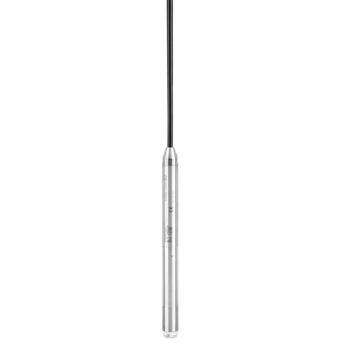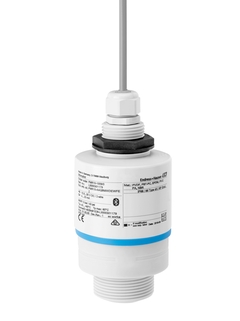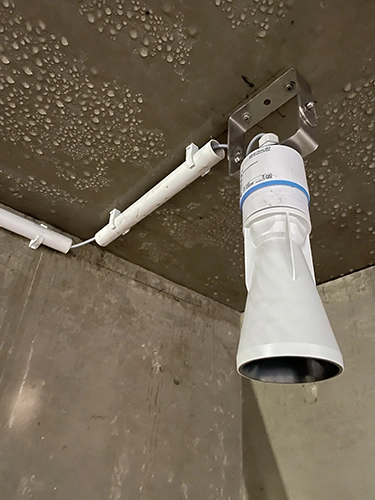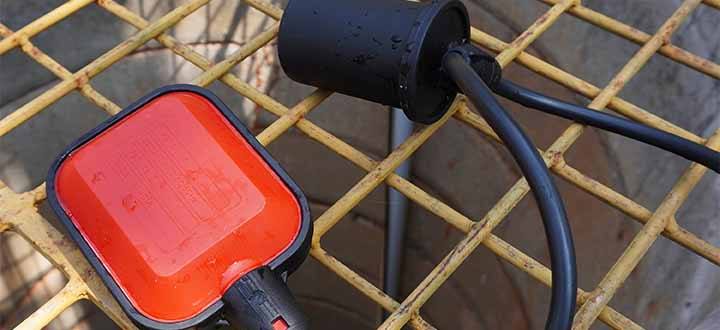The fill level control does not ensure a constant pressure, but a constant fill level.
This is important, for example, for water containers, tanks, pits and for lowering groundwater levels. Depending on the technology, pump control with level control achieves a high degree of automation, prevents damage or reduces the energy requirements of a system. With the level probe, the ultrasonic probe, the radar measurement and the float, there is a suitable level gauge for many scenarios.

Level probe
Level probes measure the hydrostatic pressure of the liquid column above them. As the hydrostatic pressure only depends on the height above the sensor and the density of the liquid to be measured, the level can be determined from this. The level probe is inserted into the liquid, usually through a level tube, to just above the bottom of the tank. The absolute pressure at this point is made up of the atmospheric air pressure and the pressure of the liquid column.
 Source: Endress & Hauser
Source: Endress & Hauser
To ensure that changes in the air pressure above the liquid do not falsify the measurement, this must be subtracted from the absolute pressure. For this purpose, the external air pressure is transmitted to the relative pressure sensor in the level probe via an air hose in the sensor cable; alternatively, a combination of two absolute pressure sensors can provide the required pressure difference.
Ultrasound
This type of sensor emits ultrasonic pulses that are reflected by the surface to be measured and captured again by the sensor. The fill level can be calculated by measuring the transit time from the sensor to the surface and back. However, due to the oscillation behavior of the transmitter, pulses can only be received after a certain minimum transit time; the minimum distance to the surface to be measured corresponding to this transit time is called the “block distance”.
 Source: Endress & Hauser
Source: Endress & Hauser
A moving surface, for example directly after filling, also has an effect on the results. Correct values can therefore only be achieved when the product is at rest.
The advantage is that physical and chemical properties of the liquid or the product generally do not distort the measured value. The ultrasonic level sensor is therefore also suitable for reactive or highly viscous chemicals.
Radar
Radar sensors are mainly used for distance measurement over longer distances and for speed measurement.

The sensor emits a carrier frequency which is reflected by the surface to be measured. The reflected frequency and time of flight are recorded so that precise statements can be made about the speed and distance to the sensor. Radar sensors are extremely precise even in poor visibility conditions.
When used as a level sensor, the echo of the container base can be evaluated in addition to the echo of the surface. Since the propagation speed of the radar signal depends on the medium, the signal propagation time changes proportionally to the fill level, which means that this can be calculated.
The two metrologically independent measured values for the height above and below the surface can be used to check the plausibility of the other value and to increase the accuracy of the level control.
Float
Float switches consist of a floating body that is buoyed up by the liquid to be measured and triggers a switching operation due to the buoyancy force. Their disadvantage is that their switching threshold can only be changed by changing the mounting position. The system is therefore not particularly flexible.

Floats are often used as additional sensors for redundant dry-running or overflow protection or for the simplest controls where no particular accuracy is required, for example in the level control of a toilet cistern.
Due to their simple mechanics, floats are also considered to be particularly robust and robust level sensors, which is why they are also used in pit dewatering.

